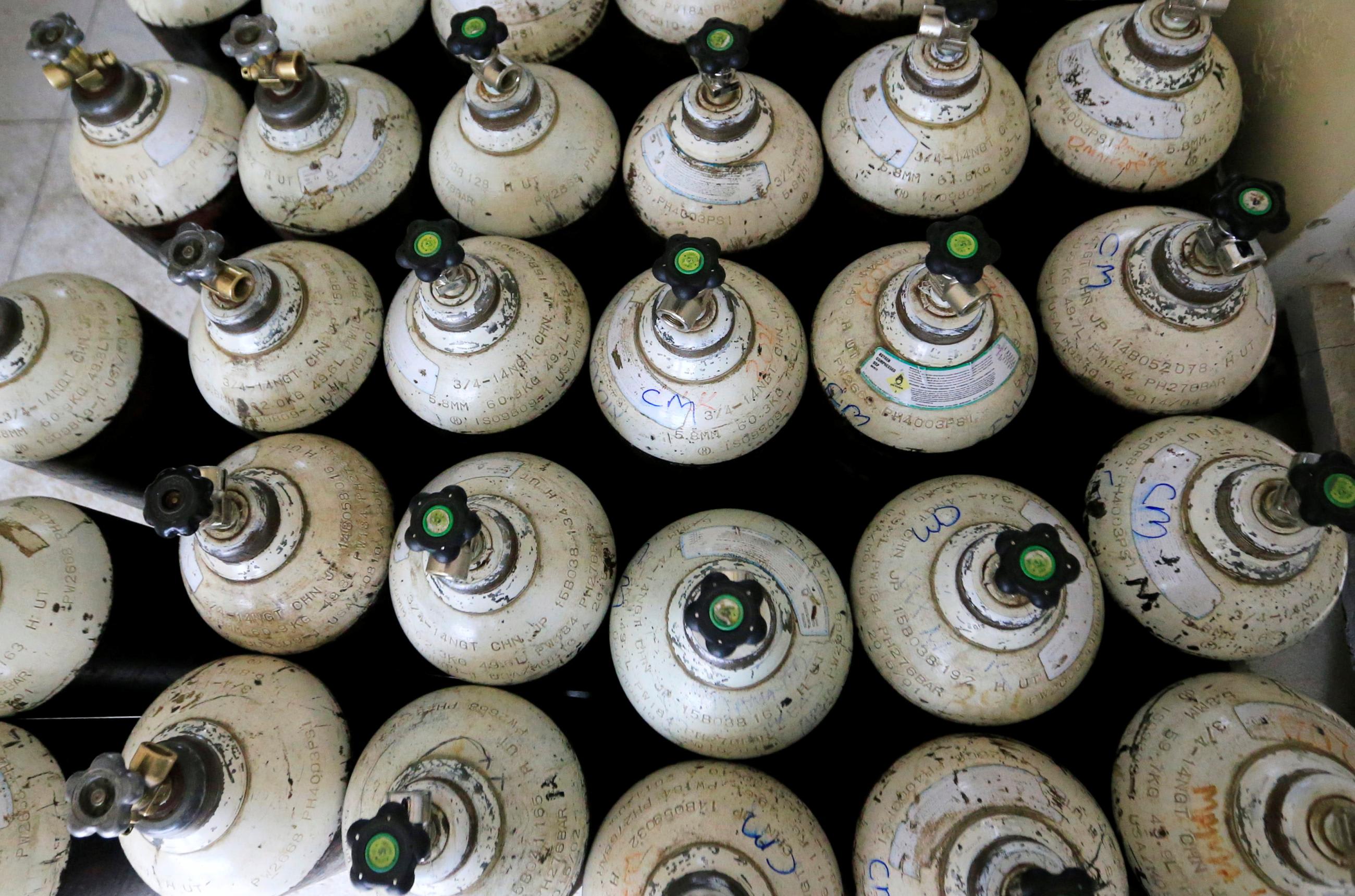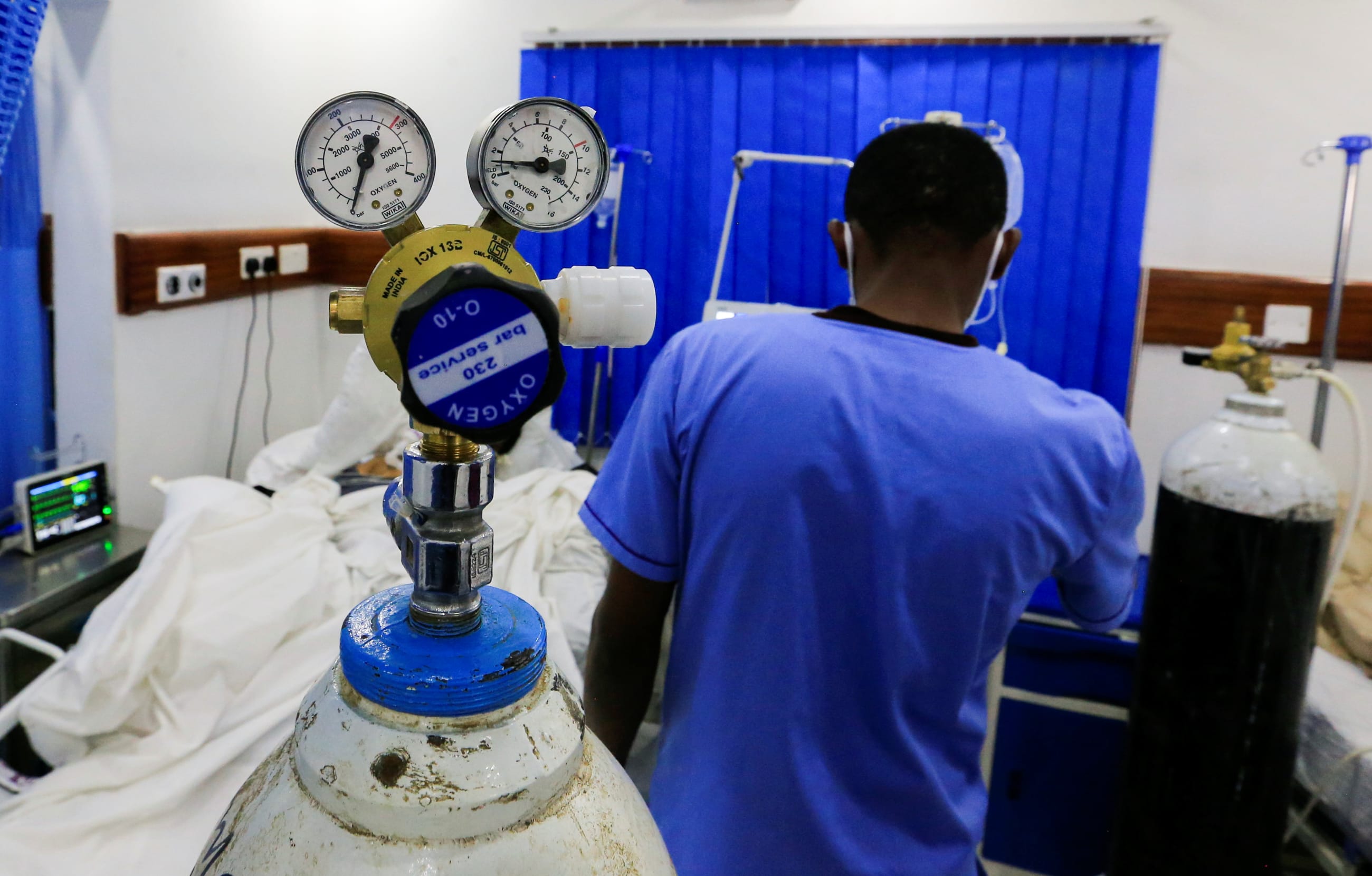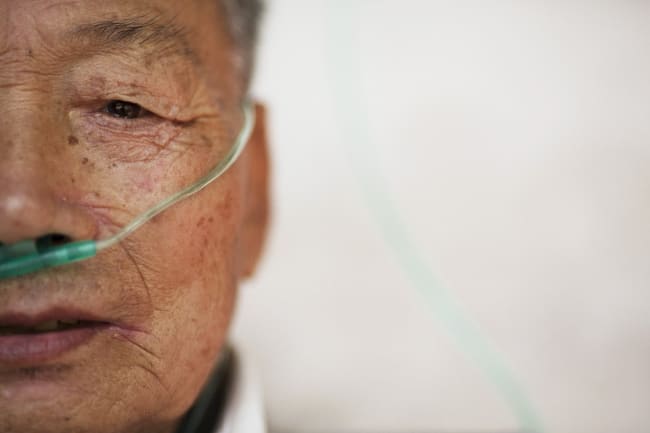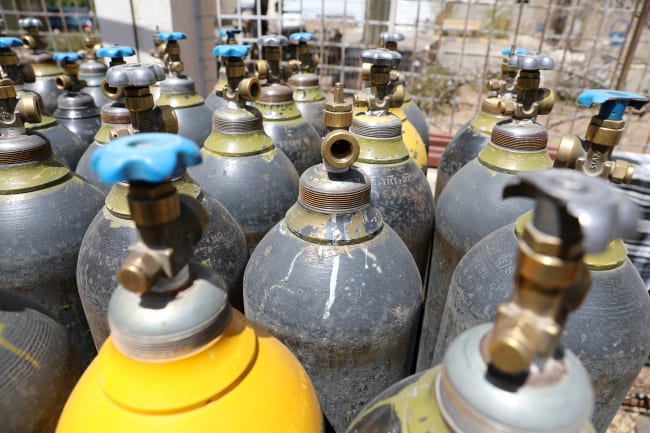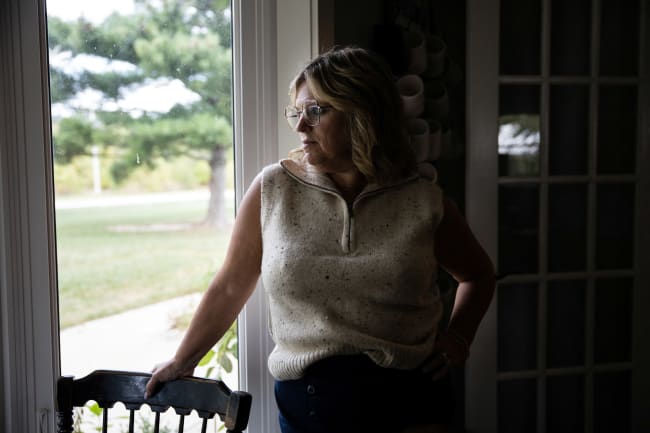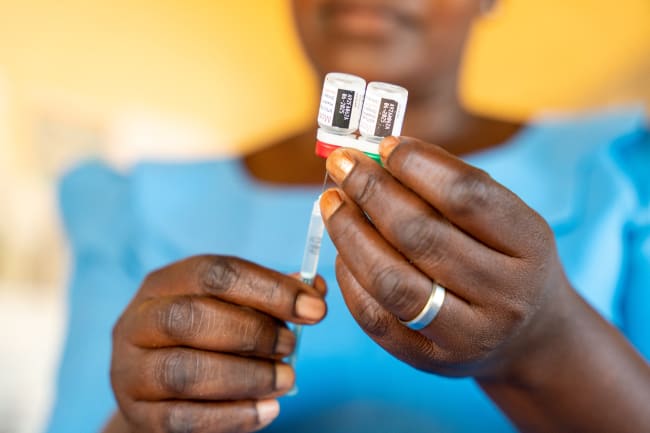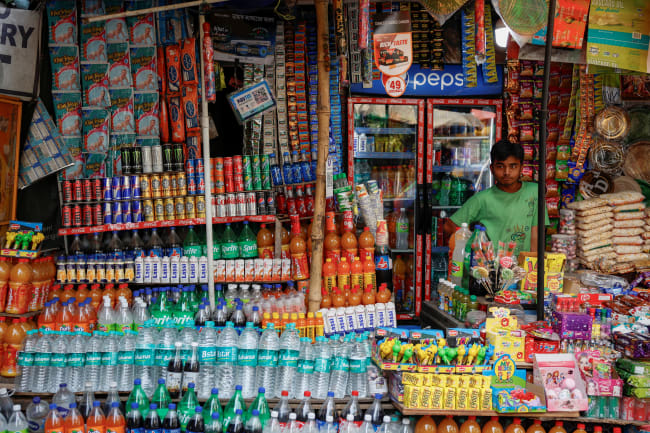This February, The Lancet Global Health Commission made an urgent call for $34 billion over five years to reduce worldwide inequities in access to medical oxygen. The announcement came as the United States began gutting global health funding, raising doubts over whether these recommendations will ever be implemented. Reports are already emerging of oxygen deaths due to financial cuts to the U.S. Agency for International Development (USAID).
The Lancet Commission found that 7 of every 10 patients—most of whom live in low- or middle-income countries (LMICs) across Africa and Asia—needing medical oxygen for acute procedures or surgeries do not receive it. This massive shortage could be the largest global access deficit for any essential medicine, dwarfing treatment gaps for HIV/AIDS (25%) and tuberculosis (23%).
Medical Oxygen Patients Are Left Behind
More than two-thirds of medical oxygen patients are not receiving necessary treatment, a much larger gap than for tuberculosis and HIV
This lack of access should come as no surprise given what happened during the COVID-19 pandemic, when hospitals in most LMICs ran out of medical oxygen and even high-income countries came perilously close. The commission reports that in 2021, 52 million COVID-19 patients needed 1.9 billion cubic meters of oxygen—a colossal amount atop the 4.4 billion cubic meters required to treat 374 million newborns, children, and adults with other conditions and for surgery.
To alleviate these massive oxygen shortages to save lives now and be better prepared for the next pandemic, the Lancet Commission offers 52 recommendations to governments, global health agencies, donors, industry, and civil society.
U.S. Support During COVID-19's Oxygen Crisis
Prior to COVID-19, little global health funding supported medical oxygen. The "golden age" of global health, which began in 2000, instead prioritized childhood vaccination, HIV/AIDS, malaria, and tuberculosis. In the subsequent decades, HIV/AIDS and child deaths halved as the U.S. government funded a major share of both efforts. The dearth of medical oxygen continued to kill silently.
When COVID-19 hit, the oxygen crisis emerged rapidly, and hospitals in Latin America, Asia, Africa, the Middle East, and even Eastern Europe were unable to supply enough oxygen. The Lancet Commission includes the testimonies of patients and family members who struggled to find oxygen during this period, and the tragic deaths that resulted. The Global Burden of Disease estimates 12.6 million direct COVID-19 deaths in 2020 and 2021, and more than 8 in 10 of those fatalities were in LMICs. Most died without ever receiving oxygen.
During the international pandemic response, global health agencies took 12 months to provide oxygen support to the worst-affected countries. Between 2021 and 2023, the International Oxygen Emergency Taskforce mobilized to help more than 100 LMICs increase their oxygen supplies.
Most of this funding—60%—came from the U.S. government, channeled primarily through The Global Fund ($600 million) and USAID ($100 million). According to the Lancet Commission, as vital as this support was, it represented a tip-of-the-iceberg response. Wide scarcity in access remains. In sub-Saharan Africa, 91% of patients who need medical oxygen do not get it. In East Asia, South Asia, and the Pacific, more than 70% of patients who require medical oxygen suffer, and many die without it.
Much of the oxygen equipment supplied during the pandemic—such as oxygen plants, liquid oxygen storage tanks, mobile concentrators, pulse oximeters—is now at risk because of a paucity in investment into operational and maintenance costs. This shortfall includes low numbers of trained clinicians and engineers, maintenance services, and spare parts.
Oxygen Access in LMICs After U.S. Pullout
In the new global health environment, LMIC governments will be called upon to fund most of the $34 billion the Lancet Commission urges. These governments need to reprioritize current health spending and mobilize new domestic funds by increasing health taxes on products such as tobacco and alcohol, reducing subsidies for products such as fossil fuels that harm health, and covering medical oxygen in national health insurance schemes to reduce the high out-of-pocket costs.
This is an opportunity for governments that have depended heavily on foreign health aid to take back control of their health systems. African leaders have always cautioned about the double-edged sword of global health aid. During the COVID-19 pandemic, Zimbabwean billionaire and African Union Special Envoy for COVID Supplies Strive Masiyiwa described Africa as being "led down the garden path" waiting for vaccines. Following the recent USAID cuts, Rwanda President Paul Kagame said he had never been a "friend of aid as much as he had been a beneficiary of it," and that "African countries need to learn to be self-sufficient." The former president of Kenya, Uhuru Kenyatta, asked residents why they expected the U.S. government to fund their health system when they aren't U.S. taxpayers.
In October 2024, global health agencies who are members of the Global Oxygen Alliance (GO₂AL) announced a plan to mobilize $4 billion, or 12%, of the Lancet Commission's recommendation. They have released an investment case [PDF] with details. In mid-February, the Global Fund announced its eighth replenishment, which included a focus on medical oxygen. The Lancet Commission calls on donors to invest in both efforts in ways that are consistent with the Lusaka Agenda principle of not displacing local government financing of health systems.
This is an opportunity for governments that have depended heavily on foreign health aid to take back control of their health systems
Each global health agency should capitalize on its strengths. The World Health Organization (WHO) needs to ensure that member states implement the agency's landmark Oxygen Resolution—which they all signed in 2023 after the punishing pandemic experience. The Lancet Commission's Access to Medical Oxygen Scorecard (ATMO₂s) will help governments track their progress. UNICEF must protect newborns and children, the commission's report having revealed that neonatal units and pediatric wards are much less likely to have oxygen than surgery and emergency departments are. Unitaid should continue investing in oxygen innovations. The Lancet Commission prioritizes 20 areas with the potential to transform the cost-effectiveness of oxygen systems, and private philanthropies such as the Gates Foundation can add value to this arena.
The commission also calls on the World Bank to provide more support to governments to reduce the high energy and capital costs of installing and operating oxygen equipment and on development finance institutions to invest in local manufacturers of medical oxygen and maintenance services. A good example is the recent Hewatele deal in East Africa—the first wholly African-owned liquid oxygen production plant—cofinanced by the U.S. International Development Finance Corporation and others.
The Stakes for the World and the United States
The Lancet Commission argues that because oxygen is an essential medicine without a substitute for many health conditions, increasing access is the very definition of health system strengthening. When countries make progress with oxygen, they can close the gap on eight of the nine sustainable development goals for health and also reduce the risk that the next respiratory pandemic—which is 66% likely to occur within the next 25 years—causes mass fatalities.
If the United States focuses on replenishing the Global Fund and accelerating investments in private-sector oxygen solutions via development finance institutions, it could help alleviate the oxygen shortages in the worst affected countries and strengthen national medical oxygen markets at the same time. This would accelerate the shift to greater self-sufficiency.
The Lancet Commission concludes that oxygen can be a pathfinder for a new global health era when national governments are in the driver's seat—setting the policies and covering most of the costs—as global health agencies and governmental donors such as the United States ensure that their funding enables a transition to local ownership of health systems.
